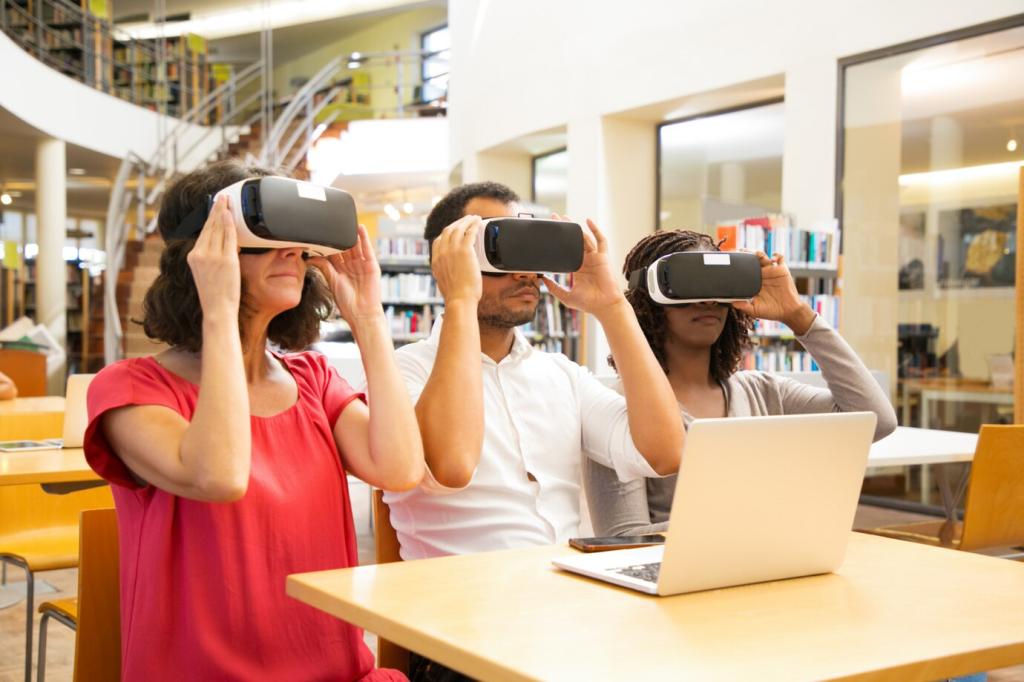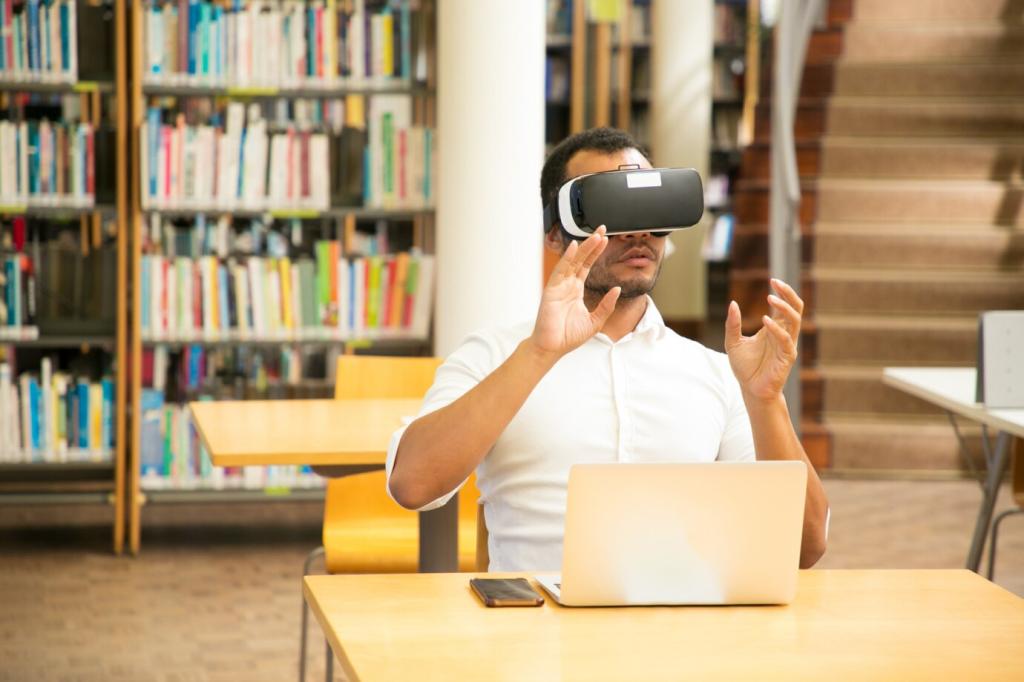The Role of VR in Enhancing Student Engagement in English
Virtual Reality (VR) has rapidly emerged as a transformative force in education, particularly in the teaching and learning of the English language. By immersing students in interactive environments, VR provides a unique platform where traditional language barriers are diminished and engagement is heightened. Through VR, students are offered a sensory-rich context to explore, communicate, and apply their English skills in scenarios that mimic real-world situations. This web page explores how VR is redefining student engagement in English education by fostering active participation, supporting diverse learning styles, and making language experiences more memorable and meaningful.

Immersive Learning Environments
Real-World Simulations
One of the most remarkable benefits of VR in English education is its ability to simulate real-life scenarios. For instance, students can practice ordering food in a virtual restaurant, engage in dialogue with digital avatars, or navigate a travel experience by asking for directions. These experiences mirror situations they may encounter outside the classroom, making learning both relevant and practical. The simulations provide a safe space where students can make mistakes and learn from them without the pressures of the real world. As a result, learners not only improve their language skills but also build the cultural competence and confidence necessary to use English effectively in daily interactions.
Dynamic Storytelling
Through VR-driven storytelling, educators can immerse students in gripping narratives or classic works of literature. By stepping into the shoes of characters or exploring story settings firsthand, students gain a deeper understanding of plot, motivation, and language use. This interactive narrative approach makes reading and comprehension exercises more engaging, as learners are no longer passive recipients but participants in the unfolding story. VR storytelling also encourages students to discuss, analyze, and even create their own endings, fostering critical thinking and creative expression. Such dynamic encounters make stories more memorable and language learning more enjoyable.
Sensory Engagement
VR goes beyond visual stimulation by incorporating auditory cues and, in some advanced systems, haptic feedback. This multisensory immersion engages students on multiple levels, supporting a variety of learning styles. In an English lesson, students might hear native accents, respond to environmental sounds, or experience tactile sensations, all of which contribute to enhanced listening skills and overall comprehension. The sensory richness of VR helps anchor vocabulary and language structures in context, making them easier to recall and use. By appealing to students’ senses, VR transforms abstract language concepts into tangible experiences, thereby deepening their engagement and understanding.
Personalized and Adaptive Learning
With VR, students can engage in exercises that are customized to their specific proficiency levels and learning goals. For example, a beginner might practice basic conversational phrases in a calm, low-pressure environment, while an advanced student might navigate complex debates or nuanced negotiations. The capacity to repeat activities and receive instant corrective feedback empowers learners to progress at their own pace. This minimizes frustration and maximizes confidence, as each student encounters challenges that are both attainable and instructive. Personalized language practice through VR thus helps learners overcome unique hurdles and achieve measurable growth.

Promoting Collaboration and Social Interaction
With VR, students can take part in group activities that simulate real-world teamwork. Whether completing a treasure hunt in an English-speaking city or working together to solve a mystery, these shared challenges demand cooperation, problem-solving, and effective communication. As learners negotiate roles, discuss strategies, and share information, they practice using English in contextually authentic ways. The immersive setting reduces inhibitions and encourages shy or reluctant speakers to participate, leading to greater equity in classroom participation. For many, these group experiences are not only educational but also deeply memorable.

